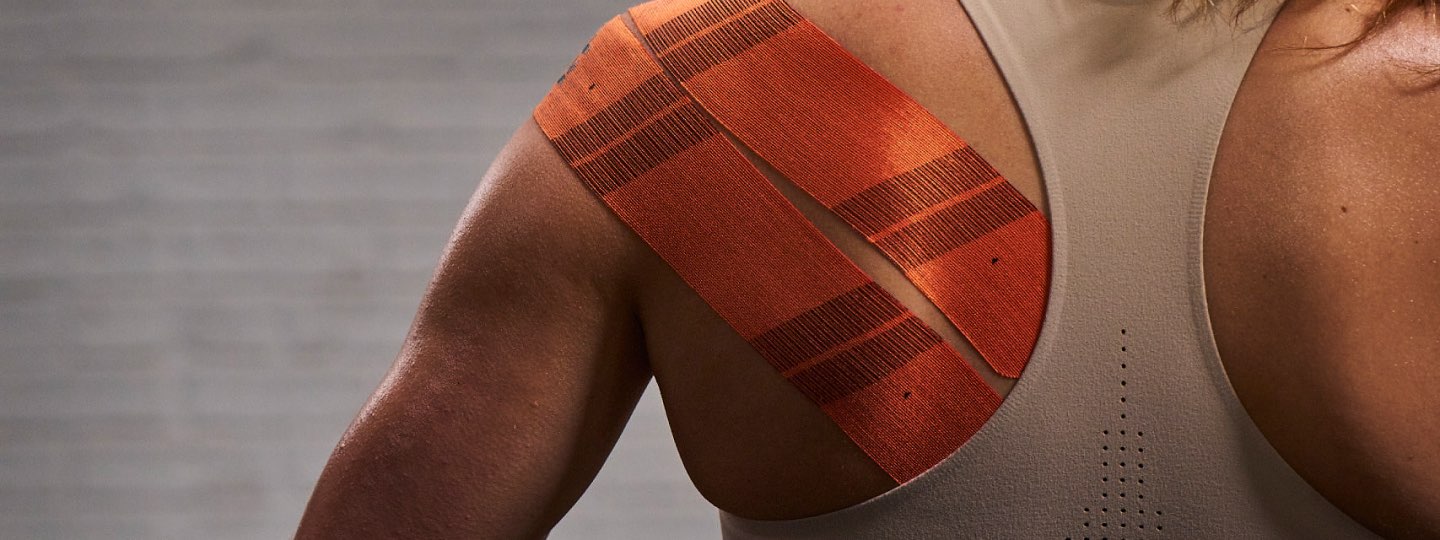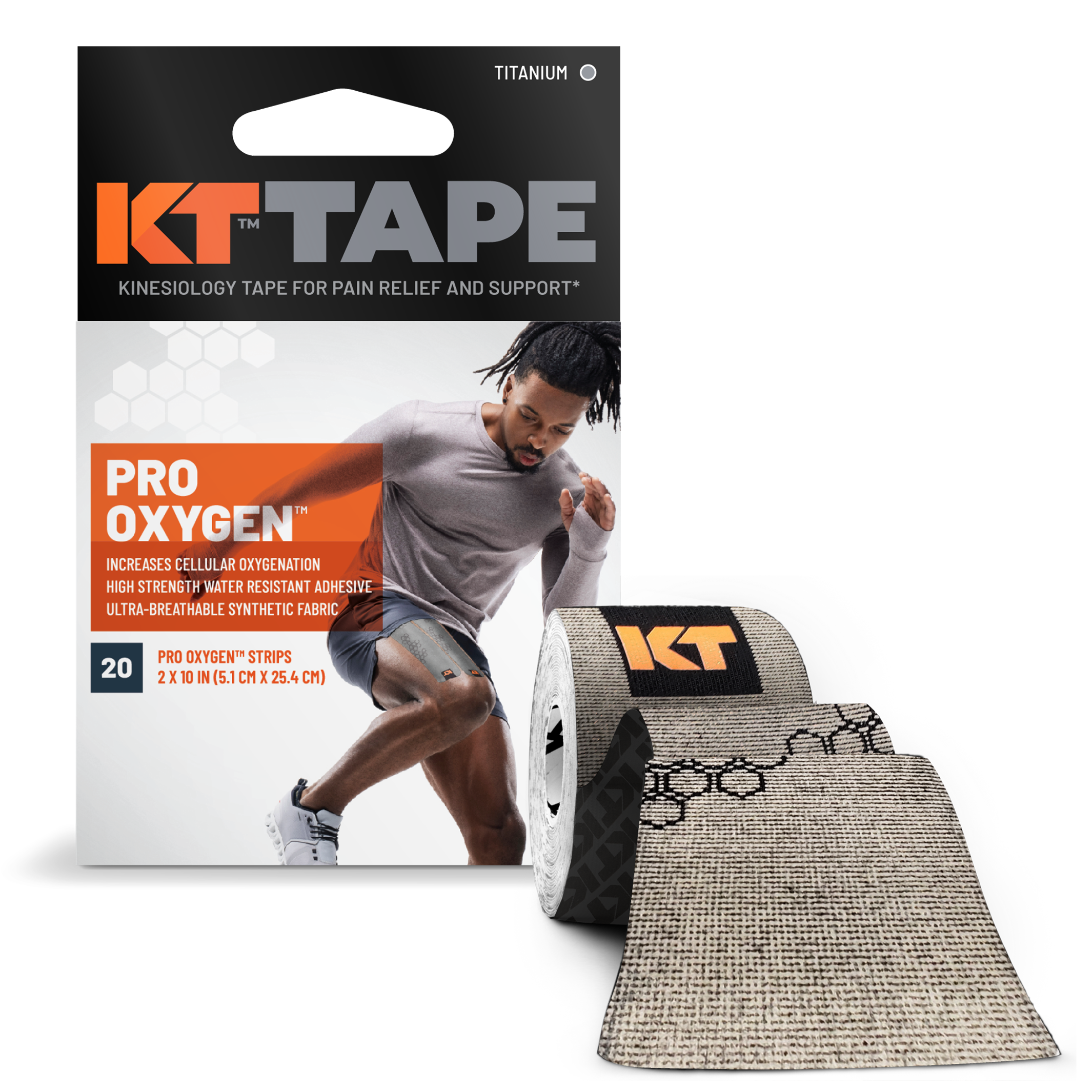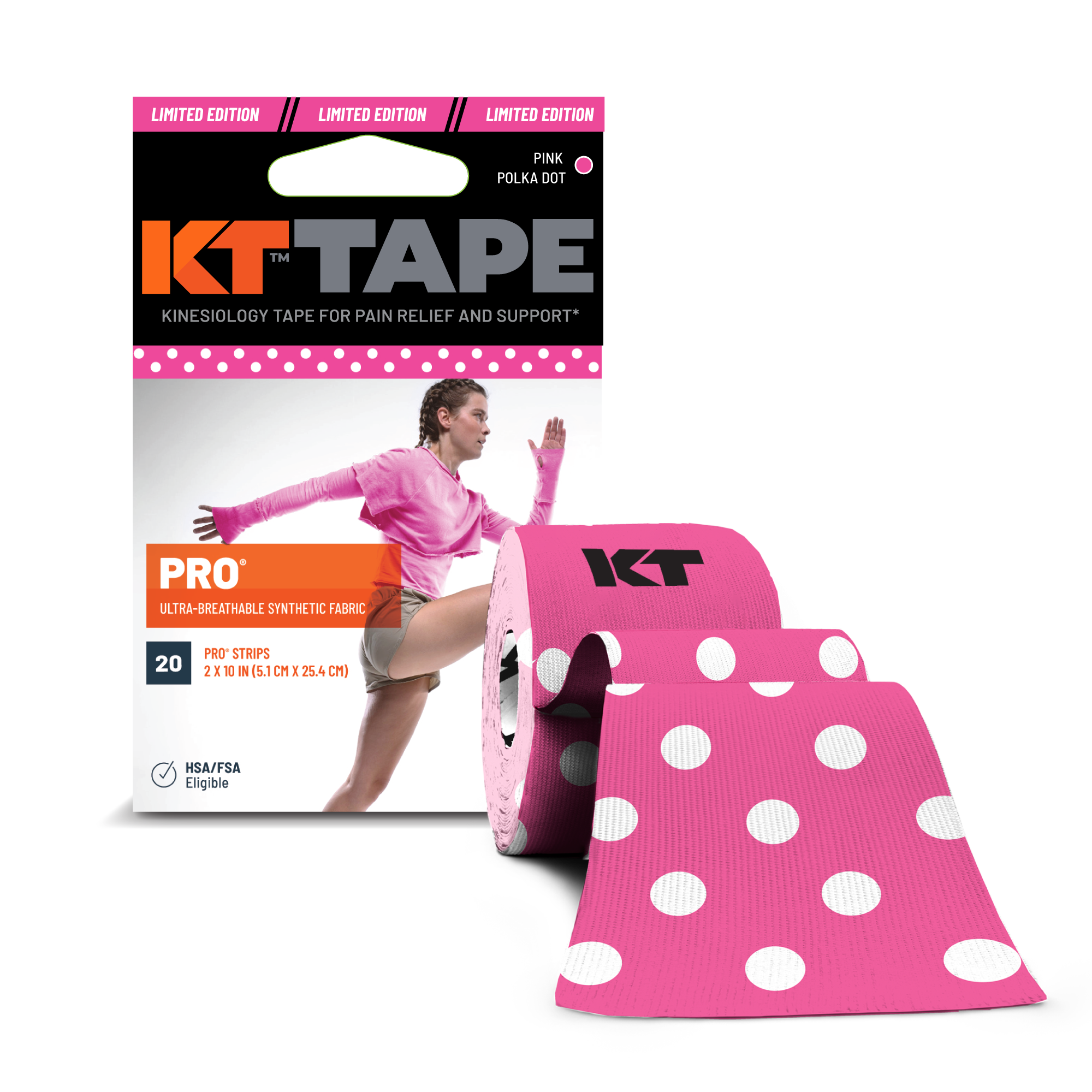Thumb
Watch this video to learn important basics for successful tape application.
Thumb pain usually presents as pain at the base of the thumb and wrist. A notable thumb pain condition includes De Quervain Syndrome, also known by many other names such as gamer’s thumb, mother’s wrist, and mommy thumb. This condition in particular is a degenerative (microscopic injury) condition of the sheath (extensor retinaculum) that surrounds the tendons passing over the thumb side of the wrist. These tendons control the motions of the thumb, most specifically the movement of the thumb towards the wrist.
When this sheath becomes injured or inflamed, the tendons become entrapped and cause pain during movement of the thumb. Thickening of the tendons from overuse or trauma will also cause problems when the tendons need to slide beneath the sheath. Women are considered at higher risk due to the sharper angles of the bones in the wrist, but the actual cause is somewhat unknown. Many believe overuse is the primary cause leading to inflammation. This hypothesis is backed up by noting that most patients with this pain are new mothers who repeatedly lift their growing babies. Symptoms are most often noted in both wrists and to the same degree of pain, indicating that more overuse activity causes more inflammation leading to pain.
When these conditions are present, movement of the thumb is restrained and further perpetuates the inflammatory condition and may create swelling in more severe cases. Pain is noted during thumb and wrist motion along with thickening and hardening of the area at the base of the thumb. Difficulty gripping, tenderness at the base of the thumb, and swelling are common symptoms. Pain is usually slight to moderate, and extreme pain may be an indication of a more serious condition.
Treatment of the pain is determined more by noting what has worked in the past rather than scientific data. KT Tape has been shown to provide support during motion of the thumb and wrist, and has markedly reduced pain in many subjects*. Corticosteroid injections are thought to be successful but do need to be weighed against the negative side-effects of increased degenerative effects. Surgery has been well accepted and successful in almost all cases, but conservative therapies are highly preferred prior to making this leap. Ice after activity, rest, and avoidance of activities that incite pain are all important steps to avoid surgery. A focus on proper lifting mechanics will also help to avoid these symptoms in the future.
For additional resources, please visit the KT Tape Forum.
*NOT CLINICALLY PROVEN FOR ALL INJURIES








